-
EXECUTIVE SUMMARY
-
MARKET INTRODUCTION
-
MARKET DEFINITION
-
SCOPE OF THE STUDY
-
MARKET STRUCTURE
-
RESEARCH METHODOLOGY
-
PRIMARY RESEARCH
-
SECONDARY RESEARCH
-
MARKET CAPACITY ESTIMATION
-
FORECAST MODEL
-
LIST OF ASSUMPTIONS
-
LIMITATIONS OF THE STUDY
-
MARKET INSIGHTS
-
MARKET DYNAMICS
-
INTRODUCTION
-
MARKET DRIVERS
-
MARKET RESTRAINTS
-
MARKET OPPORTUNITIES
-
PORTER’S FIVE FORCES ANALYSIS
- THREAT OF NEW ENTRANTS
- BARGAINING POWER OF BUYERS
- BARGAINING POWER OF SUPPLIERS
- THREAT OF SUBSTITUTES
- INTENSITY OF RIVALRY
-
VALUE CHAIN/SUPPLY CHAIN ANALYSIS
-
GLOBAL AUTOMOTIVE THROTTLE CABLES MARKET, BY TYPE
-
INTRODUCTION
-
SINGLE-CORE CABLES
- MARKET ESTIMATES & FORECAST, 2023–2032
- MARKET ESTIMATES & FORECAST, BY REGION, 2023–2032
-
MULTI-CORE CABLES
- MARKET ESTIMATES & FORECAST, 2023–2032
- MARKET ESTIMATES & FORECAST, BY REGION, 2023–2032
-
GLOBAL AUTOMOTIVE THROTTLE CABLES MARKET, BY COATING MATERIAL
-
INTRODUCTION
-
PVC CABLES
- MARKET ESTIMATES & FORECAST, 2023–2032
- MARKET ESTIMATES & FORECAST, BY REGION, 2023–2032
-
POLYETHYLENE
- MARKET ESTIMATES & FORECAST, 2023–2032
- MARKET ESTIMATES & FORECAST, BY REGION, 2023–2032
-
OTHERS
- MARKET ESTIMATES & FORECAST, 2023–2032
- MARKET ESTIMATES & FORECAST, BY REGION, 2023–2032
-
GLOBAL AUTOMOTIVE THROTTLE CABLES MARKET, BY APPLICATION
-
INTRODUCTION
-
PASSENGER CARS
- MARKET ESTIMATES & FORECAST, 2023–2032
- MARKET ESTIMATES & FORECAST, BY REGION, 2023–2032
-
COMMERCIAL VEHICLES
- MARKET ESTIMATES & FORECAST, 2023–2032
- MARKET ESTIMATES & FORECAST, BY REGION, 2023–2032
-
GLOBAL AUTOMOTIVE THROTTLE CABLES MARKET, BY REGION
-
INTRODUCTION
-
NORTH AMERICA
- MARKET ESTIMATES & FORECAST, BY TYPE, 2023–2032
- MARKET ESTIMATES & FORECAST, BY COATING MATERIAL, 2023–2032
- MARKET ESTIMATES & FORECAST, BY APPLICATION, 2023–2032
- MARKET ESTIMATES & FORECAST, BY COUNTRY, 2023–2032
- US
- CANADA
- MEXICO
-
EUROPE
- MARKET ESTIMATES & FORECAST, BY TYPE, 2023–2032
- MARKET ESTIMATES & FORECAST, BY COATING MATERIAL, 2023–2032
- MARKET ESTIMATES & FORECAST, BY APPLICATION, 2023–2032
- MARKET ESTIMATES & FORECAST, BY COUNTRY, 2023–2032
- GERMANY
- UK
- FRANCE
- ITALY
- REST OF EUROPE
-
ASIA-PACIFIC
- MARKET ESTIMATES & FORECAST, BY TYPE, 2023–2032
- MARKET ESTIMATES & FORECAST, BY COATING MATERIAL, 2023–2032
- MARKET ESTIMATES & FORECAST, BY APPLICATION, 2023–2032
- MARKET ESTIMATES & FORECAST, BY COUNTRY, 2023–2032
- CHINA
- JAPAN
- INDIA
- REST OF ASIA-PACIFIC
-
REST OF THE WORLD
- MARKET ESTIMATES & FORECAST, BY TYPE, 2023–2032
- MARKET ESTIMATES & FORECAST, BY COATING MATERIAL, 2023–2032
- MARKET ESTIMATES & FORECAST, BY APPLICATION, 2023–2032
-
COMPETITIVE LANDSCAPE
-
COMPETITIVE SCENARIO
-
COMPETITIVE BENCHMARKING OF THE GLOBAL AUTOMOTIVE THROTTLE CABLES MARKET
-
MAJOR GROWTH KEY STRATEGIES IN THE GLOBAL AUTOMOTIVE THROTTLE CABLES MARKET
-
MARKET SHARE ANALYSIS: GLOBAL AUTOMOTIVE THROTTLE CABLES MARKET
-
PRODUCT DEVELOPMENT IN GLOBAL AUTOMOTIVE THROTTLE CABLES MARKET
-
MERGERS AND ACQUISITIONS IN GLOBAL AUTOMOTIVE THROTTLE CABLES MARKET
-
CONTRACTS AND AGREEMENTS IN GLOBAL AUTOMOTIVE THROTTLE CABLES MARKET
-
EXPANSIONS AND INVESTMENTS IN GLOBAL AUTOMOTIVE THROTTLE CABLES MARKET
-
COMPANY PROFILE
-
CONTINENTAL (GERMANY)
- COMPANY OVERVIEW
- PRODUCTS/SERVICES OFFERED
- FINANCIAL OVERVIEW
- KEY DEVELOPMENTS
- KEY STRATEGIES
- SWOT ANALYSIS
-
DENSO (JAPAN)
- COMPANY OVERVIEW
- PRODUCTS/SERVICES OFFERED
- FINANCIAL OVERVIEW
- KEY DEVELOPMENTS
- KEY STRATEGIES
- SWOT ANALYSIS
-
MAGNETI MARELLI (ITALY)
- COMPANY OVERVIEW
- PRODUCTS/SERVICES OFFERED
- FINANCIAL OVERVIEW
- KEY DEVELOPMENTS
- KEY STRATEGIES
- SWOT ANALYSIS
-
HITACHI LTD. (JAPAN)
- COMPANY OVERVIEW
- PRODUCTS/SERVICES OFFERED
- FINANCIAL OVERVIEW
- KEY DEVELOPMENTS
- KEY STRATEGIES
- SWOT ANALYSIS
-
DELPHI TECHNOLOGIES (UK)
- COMPANY OVERVIEW
- PRODUCTS/SERVICES OFFERED
- FINANCIAL OVERVIEW
- KEY DEVELOPMENTS
- KEY STRATEGIES
- SWOT ANALYSIS
-
SKF (SWEDEN)
- COMPANY OVERVIEW
- PRODUCTS/SERVICES OFFERED
- FINANCIAL OVERVIEW
- KEY DEVELOPMENTS
- KEY STRATEGIES
- SWOT ANALYSIS
-
CURTISS-WRIGHT (US)
- COMPANY OVERVIEW
- PRODUCTS/SERVICES OFFERED
- FINANCIAL OVERVIEW
- KEY DEVELOPMENTS
- KEY STRATEGIES
- SWOT ANALYSIS
-
HELLA (GERMANY)
- COMPANY OVERVIEW
- PRODUCTS/SERVICES OFFERED
- FINANCIAL OVERVIEW
- KEY DEVELOPMENTS
- KEY STRATEGIES
- SWOT ANALYSIS
-
JOHNSON CONTROLS (IRELAND)
- COMPANY OVERVIEW
- PRODUCTS/SERVICES OFFERED
- FINANCIAL OVERVIEW
- KEY DEVELOPMENTS
- KEY STRATEGIES
- SWOT ANALYSIS
-
VISTEON (US)
- COMPANY OVERVIEW
- PRODUCTS/SERVICES OFFERED
- FINANCIAL OVERVIEW
- KEY DEVELOPMENTS
- KEY STRATEGIES
- SWOT ANALYSIS
-
SUMITOMO (JAPAN)
- COMPANY OVERVIEW
- PRODUCTS/SERVICES OFFERED
- FINANCIAL OVERVIEW
- KEY DEVELOPMENTS
- KEY STRATEGIES
- SWOT ANALYSIS
-
KABUSHIKI KAISHA (JAPAN)
- COMPANY OVERVIEW
- PRODUCTS/SERVICES OFFERED
- FINANCIAL OVERVIEW
- KEY DEVELOPMENTS
- KEY STRATEGIES
- SWOT ANALYSIS
-
LIST OF TABLES
-
GLOBAL AUTOMOTIVE THROTTLE CABLES MARKET, BY REGION, 2023–2032 (USD MILLION)
-
NORTH AMERICA AUTOMOTIVE THROTTLE CABLES MARKET, BY COUNTRY, 2023–2032 (USD MILLION)
-
EUROPE AUTOMOTIVE THROTTLE CABLES MARKET, BY COUNTRY, 2023–2032 (USD MILLION)
-
ASIA-PACIFIC AUTOMOTIVE THROTTLE CABLES MARKET, BY COUNTRY, 2023–2032 (USD MILLION)
-
REST OF THE WORLD AUTOMOTIVE THROTTLE CABLES MARKET, BY COUNTRY, 2023–2032 (USD MILLION)
-
GLOBAL AUTOMOTIVE THROTTLE CABLES MARKET, BY TYPE, 2023–2032 (USD MILLION)
-
NORTH AMERICA AUTOMOTIVE THROTTLE CABLES MARKET, BY TYPE, 2023–2032 (USD MILLION)
-
EUROPE AUTOMOTIVE THROTTLE CABLES MARKET, BY TYPE, 2023–2032 (USD MILLION)
-
ASIA-PACIFIC AUTOMOTIVE THROTTLE CABLES MARKET, BY TYPE, 2023–2032 (USD MILLION)
-
REST OF THE WORLD AUTOMOTIVE THROTTLE CABLES MARKET, BY TYPE, 2023–2032 (USD MILLION)
-
GLOBAL AUTOMOTIVE THROTTLE CABLES MARKET, BY COATING MATERIAL, 2023–2032 (USD MILLION)
-
NORTH AMERICA AUTOMOTIVE THROTTLE CABLES MARKET, BY COATING MATERIAL, 2023–2032 (USD MILLION)
-
EUROPE AUTOMOTIVE THROTTLE CABLES MARKET, BY COATING MATERIAL, 2023–2032 (USD MILLION)
-
ASIA-PACIFIC AUTOMOTIVE THROTTLE CABLES MARKET, BY COATING MATERIAL, 2023–2032 (USD MILLION)
-
REST OF THE WORLD AUTOMOTIVE THROTTLE CABLES MARKET, BY COATING MATERIAL, 2023–2032 (USD MILLION)
-
GLOBAL AUTOMOTIVE THROTTLE CABLES MARKET, BY APPLICATION, 2023–2032 (USD MILLION)
-
NORTH AMERICA AUTOMOTIVE THROTTLE CABLES MARKET, BY APPLICATION, 2023–2032 (USD MILLION)
-
EUROPE AUTOMOTIVE THROTTLE CABLES MARKET, BY APPLICATION, 2023–2032 (USD MILLION)
-
ASIA-PACIFIC AUTOMOTIVE THROTTLE CABLES MARKET, BY APPLICATION, 2023–2032 (USD MILLION)
-
REST OF THE WORLD AUTOMOTIVE THROTTLE CABLES MARKET, BY APPLICATION, 2023–2032 (USD MILLION)
-
GLOBAL AUTOMOTIVE THROTTLE CABLES MARKET: BY REGION, 2023–2032 (USD MILLION)
-
NORTH AMERICA AUTOMOTIVE THROTTLE CABLES MARKET, BY COUNTRY, 2023–2032 (USD MILLION)
-
NORTH AMERICA AUTOMOTIVE THROTTLE CABLES MARKET, BY TYPE, 2023–2032 (USD MILLION)
-
NORTH AMERICA AUTOMOTIVE THROTTLE CABLES MARKET, BY COATING MATERIAL, 2023–2032 (USD MILLION)
-
NORTH AMERICA AUTOMOTIVE THROTTLE CABLES MARKET, BY APPLICATION, 2023–2032 (USD MILLION)
-
US AUTOMOTIVE THROTTLE CABLES MARKET, BY TYPE, 2023–2032 (USD MILLION)
-
US AUTOMOTIVE THROTTLE CABLES MARKET, BY COATING MATERIAL, 2023–2032 (USD MILLION)
-
NORTH AMERICA AUTOMOTIVE THROTTLE CABLES MARKET, BY APPLICATION, 2023–2032 (USD MILLION)
-
CANADA AUTOMOTIVE THROTTLE CABLES MARKET, BY TYPE, 2023–2032 (USD MILLION)
-
CANADA AUTOMOTIVE THROTTLE CABLES MARKET, BY COATING MATERIAL, 2023–2032 (USD MILLION)
-
CANADA AUTOMOTIVE THROTTLE CABLES MARKET, BY APPLICATION, 2023–2032 (USD MILLION)
-
MEXICO AUTOMOTIVE THROTTLE CABLES MARKET, BY TYPE, 2023–2032 (USD MILLION)
-
MEXICO AUTOMOTIVE THROTTLE CABLES MARKET, BY COATING MATERIAL, 2023–2032 (USD MILLION)
-
MEXICO AUTOMOTIVE THROTTLE CABLES MARKET, BY APPLICATION, 2023–2032 (USD MILLION)
-
EUROPE AUTOMOTIVE THROTTLE CABLES MARKET, BY COUNTRY, 2023–2032 (USD MILLION)
-
EUROPE AUTOMOTIVE THROTTLE CABLES MARKET, BY TYPE, 2023–2032 (USD MILLION)
-
EUROPE AUTOMOTIVE THROTTLE CABLES MARKET, BY COATING MATERIAL, 2023–2032 (USD MILLION)
-
EUROPE AUTOMOTIVE THROTTLE CABLES MARKET, BY APPLICATION, 2023–2032 (USD MILLION)
-
GERMANY AUTOMOTIVE THROTTLE CABLES MARKET, BY TYPE, 2023–2032 (USD MILLION)
-
GERMANY AUTOMOTIVE THROTTLE CABLES MARKET, BY COATING MATERIAL, 2023–2032 (USD MILLION)
-
GERMANY AUTOMOTIVE THROTTLE CABLES MARKET, BY APPLICATION, 2023–2032 (USD MILLION)
-
UK AUTOMOTIVE THROTTLE CABLES MARKET, BY TYPE, 2023–2032 (USD MILLION)
-
UK AUTOMOTIVE THROTTLE CABLES MARKET, BY COATING MATERIAL, 2023–2032 (USD MILLION)
-
UK AUTOMOTIVE THROTTLE CABLES MARKET, BY APPLICATION, 2023–2032 (USD MILLION)
-
FRANCE AUTOMOTIVE THROTTLE CABLES MARKET, BY TYPE, 2023–2032 (USD MILLION)
-
FRANCE AUTOMOTIVE THROTTLE CABLES MARKET, BY COATING MATERIAL, 2023–2032 (USD MILLION)
-
FRANCE AUTOMOTIVE THROTTLE CABLES MARKET, BY APPLICATION, 2023–2032 (USD MILLION)
-
ITALY AUTOMOTIVE THROTTLE CABLES MARKET, BY TYPE, 2023–2032 (USD MILLION)
-
ITALY AUTOMOTIVE THROTTLE CABLES MARKET, BY COATING MATERIAL, 2023–2032 (USD MILLION)
-
ITALY AUTOMOTIVE THROTTLE CABLES MARKET, BY APPLICATION, 2023–2032 (USD MILLION)
-
REST OF EUROPE AUTOMOTIVE THROTTLE CABLES MARKET, BY TYPE, 2023–2032 (USD MILLION)
-
REST OF EUROPE AUTOMOTIVE THROTTLE CABLES MARKET, BY COATING MATERIAL, 2023–2032 (USD MILLION)
-
REST OF EUROPE AUTOMOTIVE THROTTLE CABLES MARKET, BY APPLICATION, 2023–2032 (USD MILLION)
-
ASIA-PACIFIC AUTOMOTIVE THROTTLE CABLES MARKET, BY COUNTRY, 2023–2032 (USD MILLION)
-
ASIA-PACIFIC AUTOMOTIVE THROTTLE CABLES MARKET, BY TYPE, 2023–2032 (USD MILLION)
-
ASIA-PACIFIC AUTOMOTIVE THROTTLE CABLES MARKET, BY COATING MATERIAL, 2023–2032 (USD MILLION)
-
ASIA-PACIFIC AUTOMOTIVE THROTTLE CABLES MARKET, BY APPLICATION, 2023–2032 (USD MILLION)
-
CHINA AUTOMOTIVE THROTTLE CABLES MARKET, BY TYPE, 2023–2032 (USD MILLION)
-
CHINA AUTOMOTIVE THROTTLE CABLES MARKET, BY COATING MATERIAL, 2023–2032 (USD MILLION)
-
CHINA AUTOMOTIVE THROTTLE CABLES MARKET, BY APPLICATION, 2023–2032 (USD MILLION)
-
JAPAN AUTOMOTIVE THROTTLE CABLES MARKET, BY TYPE, 2023–2032 (USD MILLION)
-
JAPAN AUTOMOTIVE THROTTLE CABLES MARKET, BY COATING MATERIAL, 2023–2032 (USD MILLION)
-
JAPAN AUTOMOTIVE THROTTLE CABLES MARKET, BY APPLICATION, 2023–2032 (USD MILLION)
-
INDIA AUTOMOTIVE THROTTLE CABLES MARKET, BY TYPE, 2023–2032 (USD MILLION)
-
INDIA AUTOMOTIVE THROTTLE CABLES MARKET, BY COATING MATERIAL, 2023–2032 (USD MILLION)
-
INDIA AUTOMOTIVE THROTTLE CABLES MARKET, BY APPLICATION, 2023–2032 (USD MILLION)
-
REST OF ASIA-PACIFIC AUTOMOTIVE THROTTLE CABLES MARKET, BY TYPE, 2023–2032 (USD MILLION)
-
REST OF ASIA-PACIFIC AUTOMOTIVE THROTTLE CABLES MARKET, BY COATING MATERIAL, 2023–2032 (USD MILLION)
-
REST OF ASIA-PACIFIC AUTOMOTIVE THROTTLE CABLES MARKET, BY APPLICATION, 2023–2032 (USD MILLION)
-
REST OF THE WORLD AUTOMOTIVE THROTTLE CABLES MARKET, BY COUNTRY, 2023–2032 (USD MILLION)
-
REST OF THE WORLD AUTOMOTIVE THROTTLE CABLES MARKET, BY TYPE, 2023–2032 (USD MILLION)
-
REST OF THE WORLD AUTOMOTIVE THROTTLE CABLES MARKET, BY COATING MATERIAL, 2023–2032 (USD MILLION)
-
REST OF THE WORLD AUTOMOTIVE THROTTLE CABLES MARKET, BY APPLICATION, 2023–2032 (USD MILLION)
-
LIST OF FIGURES
-
RESEARCH PROCESS OF MRFR
-
TOP-DOWN AND BOTTOM-UP APPROACH
-
MARKET DYNAMICS
-
IMPACT ANALYSIS: MARKET DRIVERS
-
IMPACT ANALYSIS: MARKET RESTRAINTS
-
PORTER’S FIVE FORCES ANALYSIS
-
VALUE CHAIN ANALYSIS
-
GLOBAL AUTOMOTIVE THROTTLE CABLES MARKET SHARE, BY TYPE, 2023 (%)
-
GLOBAL AUTOMOTIVE THROTTLE CABLES MARKET, BY TYPE, 2023–2032 (USD MILLION)
-
GLOBAL AUTOMOTIVE THROTTLE CABLES MARKET SHARE, BY COATING MATERIAL, 2023 (%)
-
GLOBAL AUTOMOTIVE THROTTLE CABLES MARKET, BY COATING MATERIAL, 2023–2032 (USD MILLION)
-
GLOBAL AUTOMOTIVE THROTTLE CABLES MARKET SHARE, BY APPLICATION, 2023 (%)
-
GLOBAL AUTOMOTIVE THROTTLE CABLES MARKET, BY APPLICATION, 2023–2032 (USD MILLION)
-
NORTH AMERICA AUTOMOTIVE THROTTLE CABLES MARKET SHARE (%), 2023
-
NORTH AMERICA AUTOMOTIVE THROTTLE CABLES MARKET, BY COUNTRY, 2023–2032 (USD MILLION)
-
EUROPE AUTOMOTIVE THROTTLE CABLES MARKET SHARE (%), 2023
-
EUROPE AUTOMOTIVE THROTTLE CABLES MARKET, BY COUNTRY, 2023–2032 (USD MILLION)
-
ASIA-PACIFIC AUTOMOTIVE THROTTLE CABLES MARKET SHARE (%), 2023
-
ASIA-PACIFIC AUTOMOTIVE THROTTLE CABLES MARKET, BY COUNTRY, 2023–2032 (USD MILLION)
-
REST OF THE WORLD AUTOMOTIVE THROTTLE CABLES MARKET SHARE (%), 2023
-
REST OF THE WORLD AUTOMOTIVE THROTTLE CABLES MARKET, BY COUNTRY, 2023–2032 (USD MILLION)
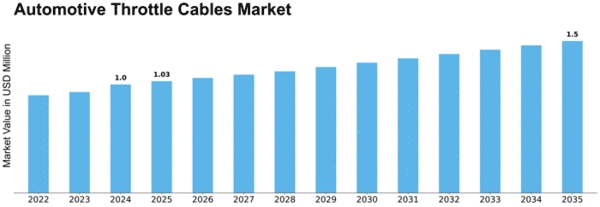

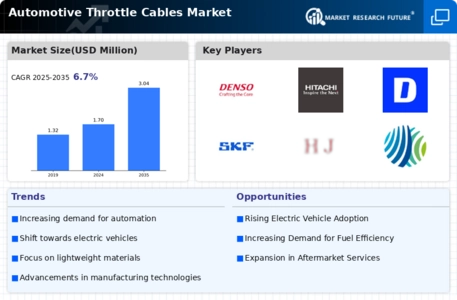
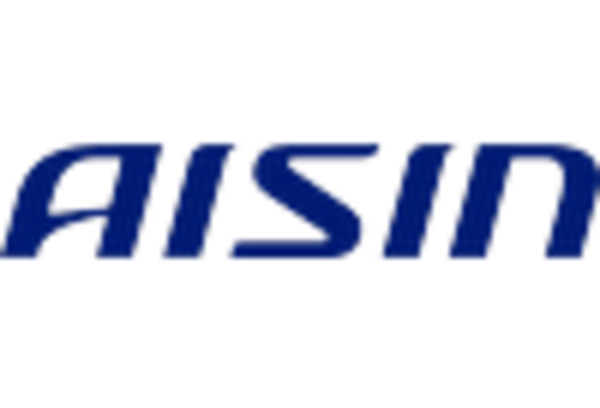
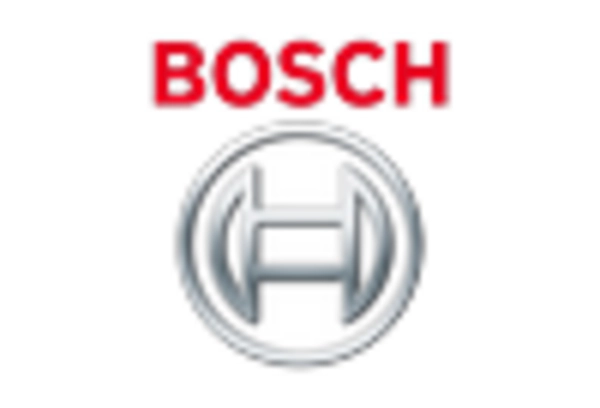
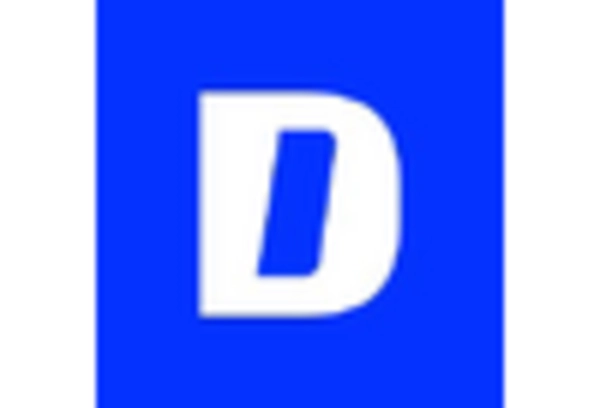
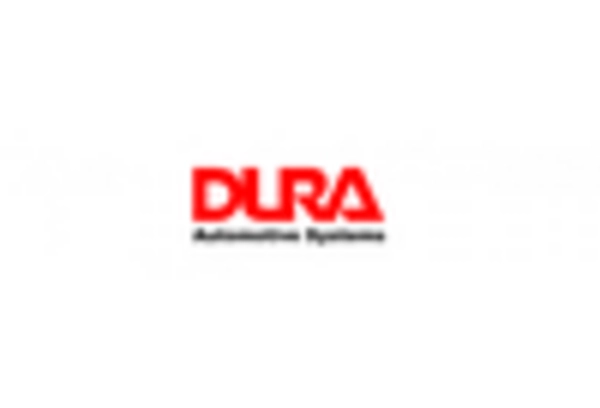
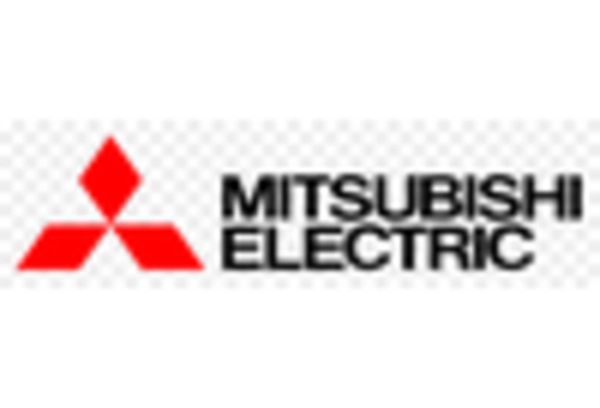
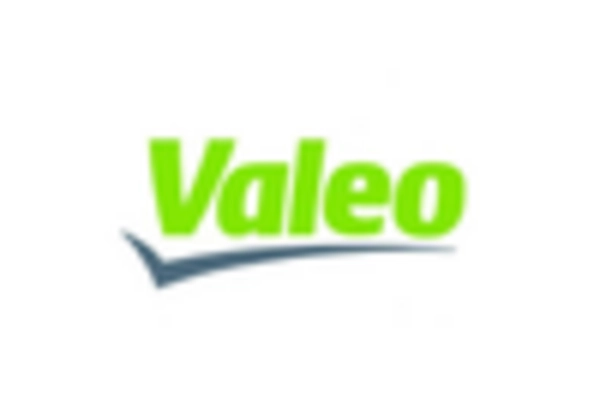









Leave a Comment